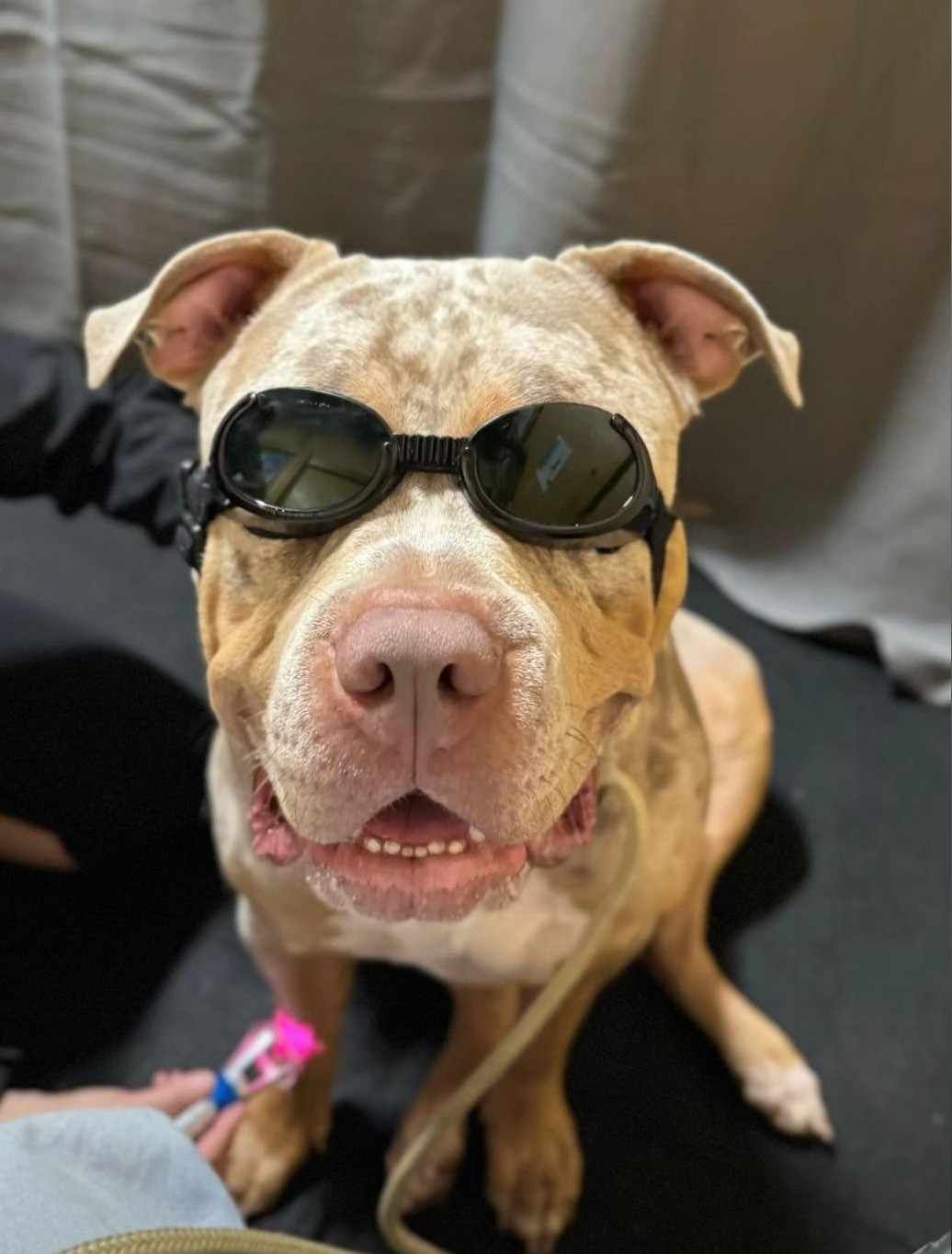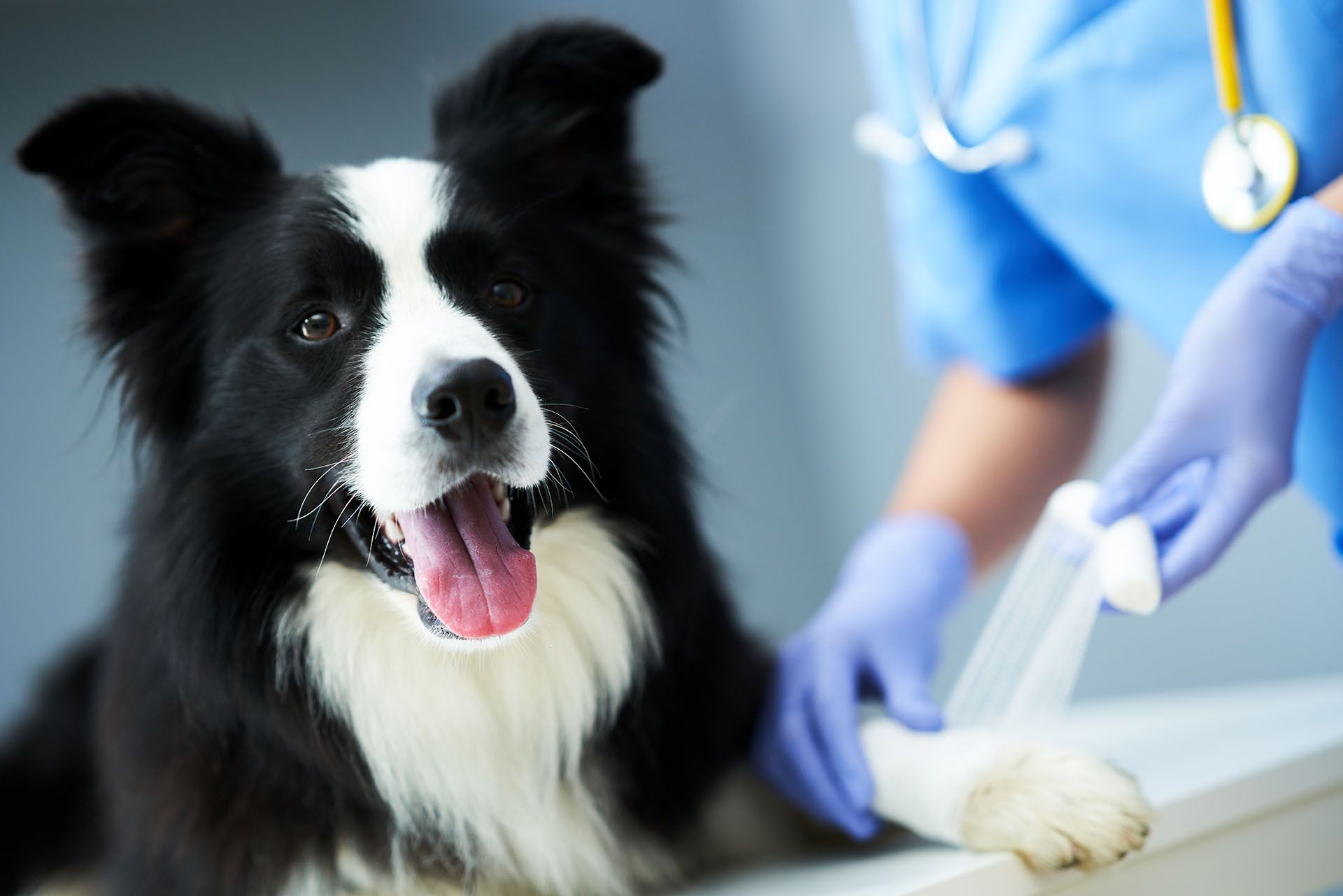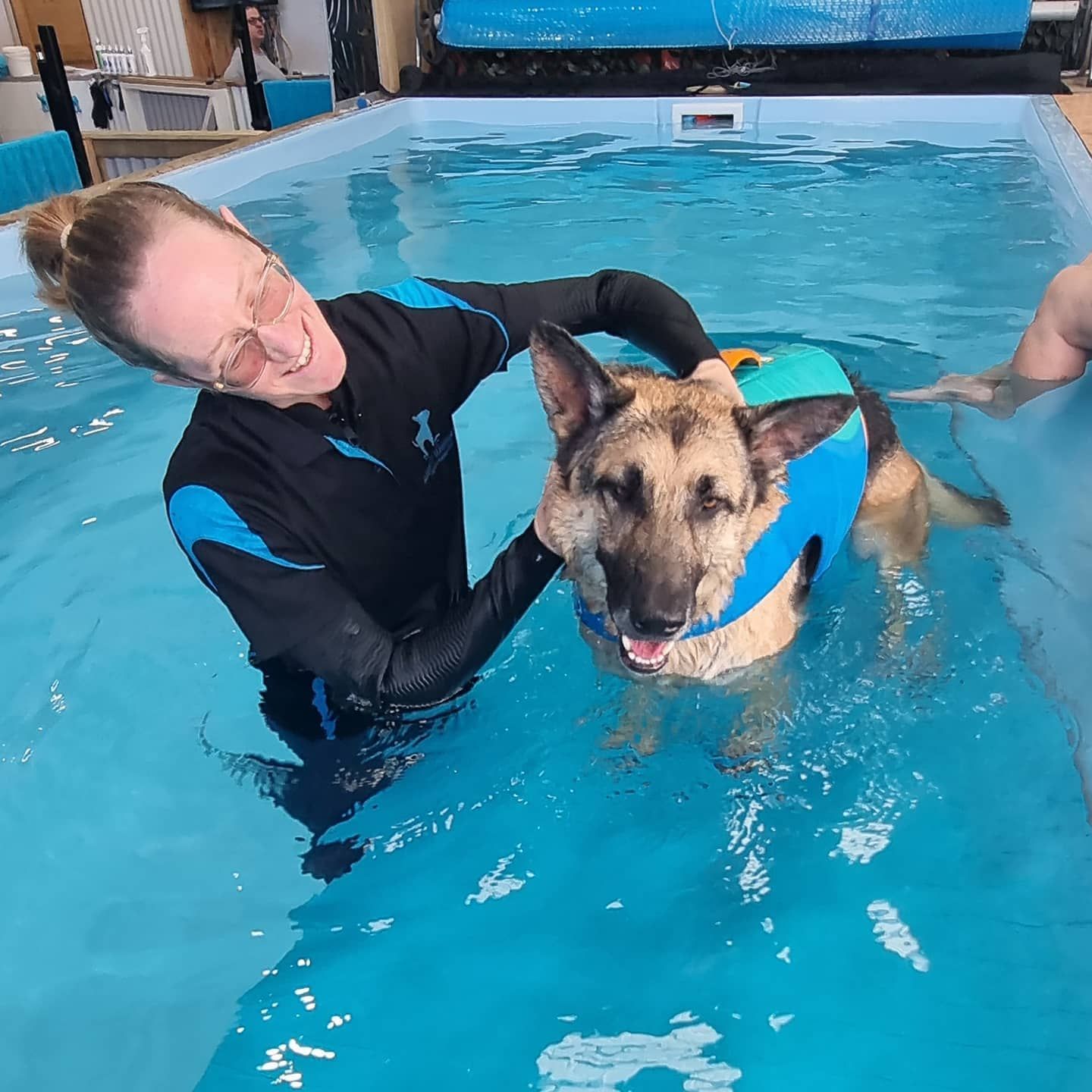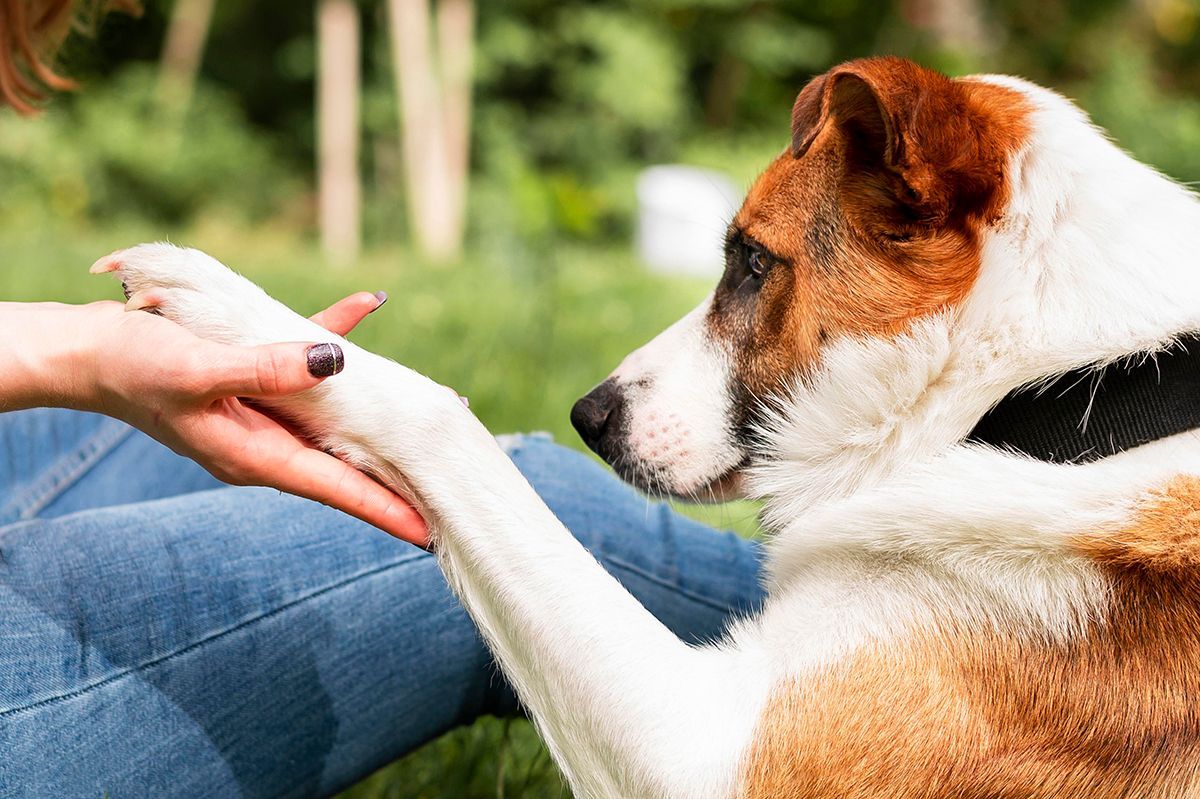What is Vestibular Disease in Dogs?
Is your dog stumbling or tilting their head more often than usual? Or perhaps your dog is having trouble maintaining their balance while walking? If you've noticed any of these concerning symptoms, your canine companion may be dealing with vestibular disease.
In this blog, we will comprehensively cover the topic of canine vestibular disease, including an explanation of what it is, a look at its symptoms, helpful home care tips for managing the condition, and an in-depth look at how
canine hydrotherapy can assist in the treatment and recovery process.
What is canine vestibular disease?
Canine vestibular disease, also known as vestibular syndrome or vestibular neuritis, is a condition that affects the inner ear and causes a disruption in a dog's balance and coordination. The vestibular system is responsible for maintaining a dog's sense of balance and spatial orientation, and it consists of the inner ear, the vestibular nerve, and the brainstem.
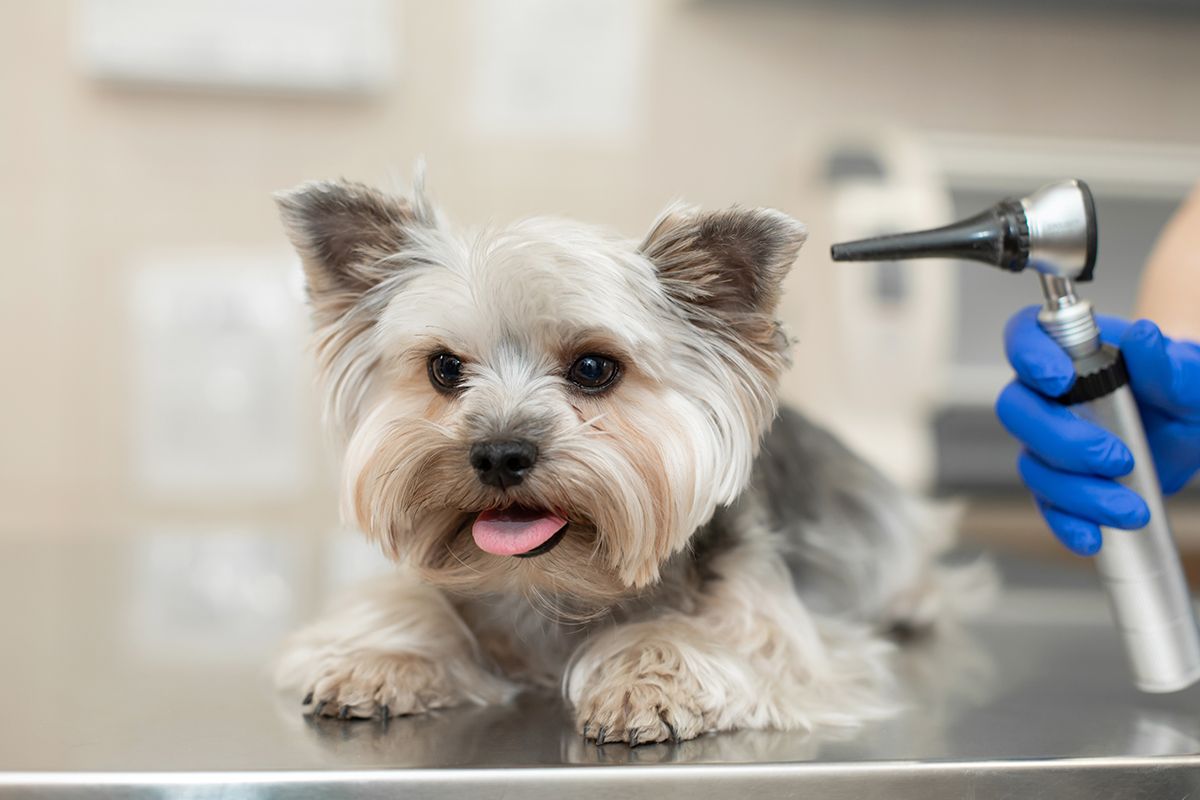
What are the common symptoms of canine vestibular disease?
Canine vestibular disease can occur suddenly and may manifest as a variety of symptoms, including:
Loss of balance
Dogs with vestibular disease may have difficulty standing, walking, or maintaining their balance. They may stumble, fall, or lean to one side.
Head tilt
Dogs may tilt their head to one side, often in a persistent or exaggerated manner.
Nystagmus
Nystagmus refers to involuntary, rapid eye movements. Dogs with vestibular disease may have horizontal or rotary nystagmus, where their eyes move rapidly from side to side or in a circular motion.
Lack of appetite
Some dogs with vestibular disease may lose their appetite or have difficulty eating due to their balance issues.
Vomiting
Nausea and vomiting can occur in some cases of vestibular disease.
What causes canine vestibular disease?
The exact cause of canine vestibular disease is often unknown, but it is thought to be related to inflammation or infection of the inner ear. Other potential causes include trauma, tumours, certain medications, or underlying health conditions such as hypothyroidism.
Is vestibular disease in dogs treatable?
Treatment for vestibular disease depends on the underlying cause and severity of the symptoms. In some cases, supportive care such as providing a quiet and safe environment for the dog to rest and recover may be sufficient. Medications may be prescribed to manage symptoms such as nausea or vertigo. If an underlying cause such as an infection or tumour is identified, appropriate treatment may be recommended.
What should I do if I think my dog has vestibular disease?
If you suspect that your dog may have vestibular disease, it's important to consult with your veterinarian for a proper diagnosis and appropriate treatment options. Your veterinarian will perform a physical examination and may also recommend further diagnostic tests such as blood work, imaging (such as X-rays or MRI), or referral to a veterinary specialist for further evaluation and management.
Most dogs with vestibular disease recover with time and supportive care, although some residual symptoms may persist in some cases. Your veterinarian will be able to provide you with the best advice and care for your dog's specific condition. So, it is important to consult with a veterinarian for an accurate diagnosis and appropriate treatment plan for your dog.
Are there any home remedies and care tips for canine vestibular disease?
Here are some home care tips for a canine with vestibular disease:
Provide a safe and comfortable environment
Create a safe space for your dog to move around without obstacles or hazards that could cause falls or injuries. Use nonslip mats on slippery surfaces such as hardwood or tile floors to help your dog maintain stability. Avoid moving furniture or rearranging your home during your dog's recovery to minimise disorientation.
Assist with mobility
Your dog may have difficulty walking or standing during a vestibular episode. Provide support by using a sling or towel under their belly to help them walk or gently lift them up to a standing position. Avoid sudden movements or pulling on your dog's limbs, as it may worsen their condition.
Offer frequent, small meals and fresh water
Loss of appetite and dehydration can be common in dogs with vestibular disease. Offer small, frequent meals of easily digestible food such as boiled chicken and rice, or a prescription diet recommended by your veterinarian. Ensure your dog always has access to fresh water to stay hydrated.
Maintain good hygiene
Dogs with vestibular disease may have difficulty grooming themselves, so you may need to assist with brushing their coat, cleaning their ears, and trimming their nails. Keep their environment clean and free of urine or faeces to prevent infections.
Monitor and manage symptoms
Vestibular episodes can last for days to weeks, and symptoms may vary. Monitor your dog's condition closely and notify your veterinarian of any changes or concerns. Your vet may prescribe medications such as anti-nausea or anti-inflammatory drugs to manage symptoms and promote recovery.
Provide comfort and reassurance
Dogs with vestibular disease may feel anxious or disoriented. Spend time with your dog, offer gentle reassurance, and avoid sudden loud noises or bright lights that could startle them. Keep a consistent routine and try to minimise stressors in your dog's environment.
Follow your veterinarian's recommendations
It's important to work closely with your veterinarian and follow their recommendations for home care. They may suggest additional treatments or therapies based on your dog's specific condition and needs.
What is hydrotherapy and how can it help with vestibular disease?
Hydrotherapy can be a beneficial treatment for canines with vestibular disease. It involves the use of water for therapeutic purposes and can be particularly helpful for dogs with vestibular disease due to its low-impact and supportive nature.
Here are some ways hydrotherapy can be used for canines with vestibular disease:
Underwater treadmill
An underwater treadmill is a specialised device that allows a dog to walk or swim in a controlled water environment. The buoyancy of the water can help support the dog's body weight, reducing the impact on their joints and muscles while they exercise. This can be particularly beneficial for dogs with vestibular disease, as it can help improve their balance and coordination.
Pool therapy
Swimming in a pool can provide excellent low-impact exercise for dogs with vestibular disease. The water supports the dog's body weight, allowing them to move without putting undue strain on their joints and muscles. Swimming can help improve muscle strength, cardiovascular fitness, and balance, which can be beneficial for dogs with vestibular disease.
Water-based exercises
Various water-based exercises can be done in a shallow pool or other controlled water environment to help improve a dog's balance and coordination. These may include standing exercises, weight shifting, and gentle movements to challenge the dog's balance and encourage them to use their muscles in a coordinated manner.
Hydrotherapy for stress relief
The warm water in hydrotherapy can also help reduce stress and anxiety in dogs with vestibular disease. The relaxing properties of the water can help calm the dog's nervous system and promote relaxation, which can be beneficial for managing the symptoms of vestibular disease, such as nausea and anxiety.
Things to consider before starting hydrotherapy
It's important to work with certified canine hydrotherapists like Water Walkies to develop a hydrotherapy program that is tailored to your dog's specific needs and condition. They can assess your dog's overall health and provide recommendations on the appropriate type, duration, and frequency of hydrotherapy sessions to ensure your dog's safety and well-being.
Moreover, hydrotherapy should always be done under the supervision of a qualified professional to ensure that it is done safely and effectively. Overall, hydrotherapy can be a valuable adjunct treatment for canines with vestibular disease, helping to improve their balance, coordination, and overall well-being. Always consult with your veterinarian before starting any new treatment or exercise program for your dog.
Takeaway
Remember, vestibular disease can be distressing for both you and your dog, but with proper care and support, most dogs can recover from this condition over time. Consult with your veterinarian for a proper diagnosis and individualised treatment plan for your canine companion. Take note of any changes in your dog's condition and contact your vet if you have concerns.

